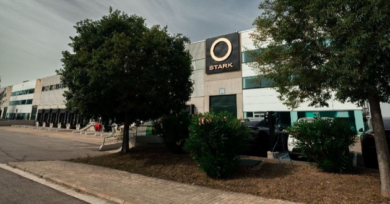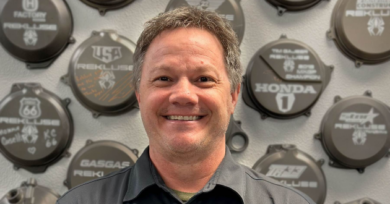ATV safety device is for sale
Invention helps ATV user cut accidents With a fleet of 60 ATVs that each run about 10,000 miles annually, Veritas DGC employees log more miles on ATVs than anyone we’ve ever heard of (prove us wrong!). Searching for underground oil and gas deposits, the Houston-based firm uses ATVs in a wide variety of environments throughout North America, from mountains to deserts to prairies to the high arctic.
Even though employees were trained in safety, the field crew’s injury rate climbed in 1998; the international firm knew it had to either change use patterns or quit using ATVs.
Following a fatal accident in 1998, Veritas performed an in-depth “accident investigation” study which pointed to speed as “the common denominator in all the ATV accidents we had,” said Ray Mays, manager of the Health, Safety and Environment department of Veritas’ Land Division. “Even with all the rider training, the attention to proper equipment, the overall safety focus, we determined speed was the root cause of accidents and injuries.”
ATV Safety Enhancement
With expertise in electronic data acquisition, engineers at Veritas knew they could devise an electronic speed-limiting device that would allow engine control when needed with top-speed reduction for safety.
The Accelerated Safety Enhancement system — or ACE — uses an electronic device that taps into the ATV’s ignition system, essentially retarding the ignition timing to a maximum of 45 degrees after top dead center.
Controlling the timing at the ignition control module allows the ACE system to control ground speed by limiting the engine speed. The ATV still has power at the low-end of the rpm range for hill climbs or to get over obstacles, and it’s not harming the machine’s engine or exhaust system. “We still get fuel burn,” said Darrin Silvernagle, an engineer based in the company’s Calgary, Alberta office, “and we’re not loading up the exhaust with fuel.”
The newest generation of the ACE includes a “look-up table” built into the circuitry that includes information on gear ratios as well as speed and rpm relationships for several current ATV models. When wired into the ignition system of any of these ATVs, the ACE system determines which machine it is installed on, and programs the correct speed-reducing ignition timing for that engine, be it a Honda 300, Honda 450, or Yamaha Kodiak.
Safety, Plus
Veritas saw improvements in the safety records of its ATV users, following the introduction of ACE. In 1998, Veritas had 33 ATV users injured. After implementing the ACE system in 1999, five ATV users were injured. By 2001, that number dropped to one. And that is within more than 200,000 hours of ATV use, and an average of about 420,000 miles logged per year.
That impressive safety record is followed by significant savings in maintenance and repair costs, too. “We used to go through a Honda Foreman 400 in about six months,” said Roach. “Now these same Hondas last almost three years, and we can sell them when we’re done.”
Before implementing the speed limiter, Veritas had astronomical maintenance costs. The company spent about $1,000 per month to keep each ATV in running order. For an ATV that costs about $5,000 new, and only lasts the company six months, maintaining a fleet of ATVs was an expensive venture for Veritas. Mays figures it was costing the company about one dollar per mile in maintenance charges.
After installing ACE, those costs dropped to 18 cents per mile of use. And the ATVs’ life span increased to two years or more, and actually had a resale value at the end of that life.
Now, Veritas is looking for a partner to manufacture the ACE system. With the development of a new remote-control technology, the ACE system could be designed to deliver different speed settings for specific use patterns. A Standard setting could be setup at 15 mph, for example, for use by commercial and utility ATV users. A Road or Trail setting could allow speeds up to 30 mph for use on more predictable terrain. An Open setting would allow full engine power for recreational users in controlled environments.




